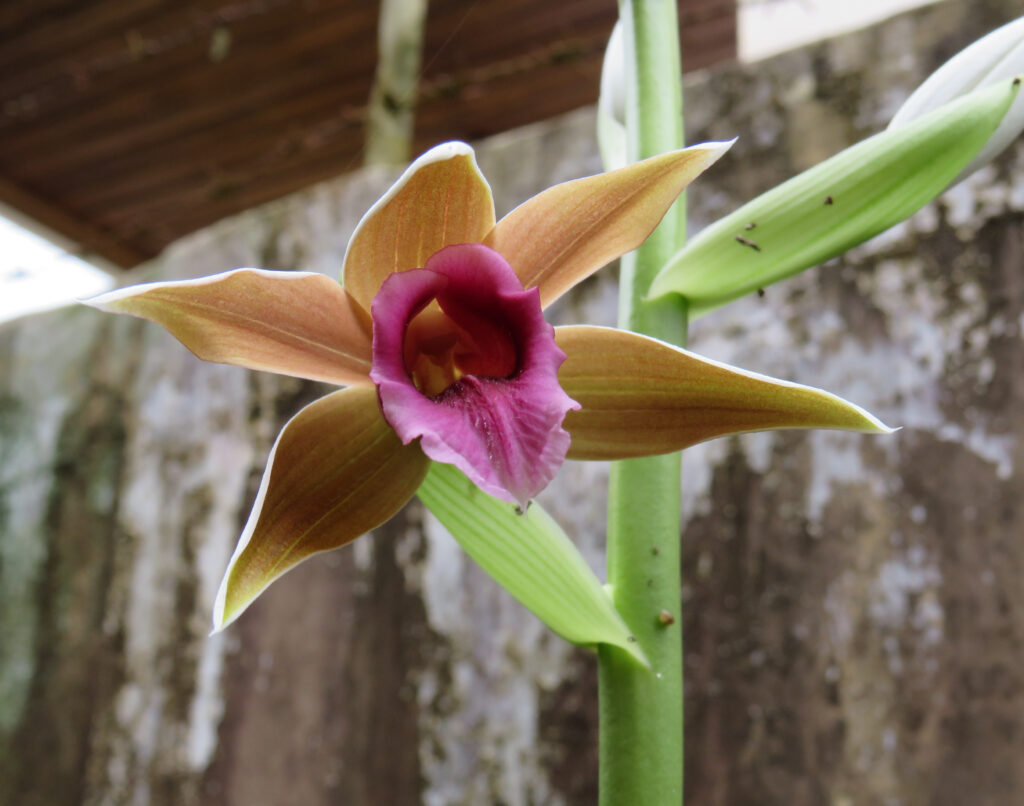Watering your plants may seem like a straightforward process, but with orchids, it requires a bit more know-how. This will ensure your plant will thrive and produce gorgeous blooms. There’s no one-size-fits-all answer to how much to water your orchid, as that will depend on a number of factors. We’ll help you understand these factors so you can provide excellent care for your plant.
In this guide, we’ll briefly cover orchid botanical classification and evolution. We will also discuss the various considerations to consider when watering your orchid.
Alright, let’s get to it!

How much water your orchids need depends on a variety of factors.
©Summer 1810/Shutterstock.com
Orchids: Botanical Classification and Natural Environments
Containing 28,000 species across 880 genera, the Orchidaceae family represents the most diverse and second-largest flowering plant family on Earth. Currently, this behemoth of a botanical family contains roughly 10% of all flowering plant species!
While orchids began as terrestrial plants roughly 120 million years ago, by 35 million years ago. The majority of orchid species had evolved to become epiphytes. These orchids live with their roots attached non-parasitically to tree bark. In this place, they soak up sun filtered through the tree canopy. They can also absorb water from air humidity and rainfall. They take in nutrients from the air through organic debris that moves through bark and moss and through beneficial plant-fungi nutrient exchanges.
The majority of these orchids live in tropical and subtropical regions. These regions usually experience heavy rainfall in the summer and dry periods during the winter. As such, many species have developed pseudobulbs, which are structures that store nutrients and water for use during prolonged dry periods.
Less than 20% of current orchid species are terrestrial, growing with their roots in the soil where they take in moisture from the ground. These terrestrial species often live in temperate regions where rainfall is more evenly dispersed throughout the year.

Most orchids are epiphytes with roots attached to tree bark. They receive sun filtered through the tree canopy and absorb water from air humidity and rainfall.
©Sergio J Lievano/Shutterstock.com
Watering Your Orchids: What to Consider
As is the case with other aspects of orchid care, it’s crucial to understand what type of orchid you’re growing and its native environment. As we covered above, orchids grow in a number of habitats that experience a range of wet-dry cycles.
So, first, make sure you know what type of orchid you have or are going to get – is it a tropical epiphyte native to a lowland rainforest, a subtropical lithophyte (grows on rocks) native to a mountainous region, a terrestrial species endemic to a cool-to-cold temperate region, etc.?
Below, we’ll break down general watering guidelines based on broad orchid types and climate zones. These guidelines will include the following tips:
- How often to water
- When to cut back on watering
- What water source to use
Watering Your Orchids
As we mentioned, tropical orchids (usually epiphytes) and subtropical orchids tend to experience a distinct, seasonal wet-dry cycle. Summers are marked by heavy rainfall, while winters tend to have drought-like conditions. No orchid does well with soggy roots, but it’s especially important to not saturate the growing substrate of epiphytic orchids since they grow with their roots exposed to the air. They require consistent access to moving air to survive and thrive.
Terrestrial orchids from temperate environments usually experience even more rainfall throughout the year with short spells of dry periods. These orchids do best with a more consistent watering schedule throughout the year and tend to prefer that their growing substrate always stays evenly moist.

Terrestrial orchids from temperate environments do best with a more consistent watering schedule throughout the year.
©Kendo_kadu/Shutterstock.com
How Often to Water
A general rule for tropical orchids is to water about once weekly during the growing season. Typically, you’ll want to water enough that the substrate stays moist but not saturated. Some species, like those in the Dendrobium genus, do prefer to have their substrate dry out in-between watering, so make sure you know the growing requirements of your specific species.
Growing terrestrial orchids in well-draining, aerated soil that is amended to retain enough moisture while quickly draining away the excess is crucial. How often you water will depend on the species, though you’ll usually want to keep a schedule that ensures the growing medium stays moist but not soggy.

Orchids in the
Dendrobiumgenus prefer to dry their substrate out in-between watering.
©iStock.com/Oscar Yoshinori Toyofuku
When to Cut Back on Watering
During the winter, it’s important to mimic the native climate of tropical orchids by cutting back some on the watering schedule, usually to about once every 10 to 14 days. At this time, some species need to have watering cut back to allow the substrate to dry out, while others need only to be watered enough to prevent the substrate from fully drying.
Because terrestrial species, like Paphiopedilum venustum, don’t tend to grow pseudobulbs to store water, it’s important to ensure you provide adequate water year-round.
What Water Source to Use
Different Sources of water contain varying concentrations of total dissolved solids (TDS), a measurement of the amount of dissolved solids in water less than 2 microns in size. These solids are organic and inorganic compounds and chemical elements. Ground water contains much higher levels of TDS than rainwater, so it’s typically not a good idea to water epiphytes with tap water unless you know your TDS levels are less than 175mg/liter. The result of this is usually an orchid that suffers from mineral and salt buildup.
Most terrestrial orchids do just fine with water containing 500mg/liter or less of total dissolved solids. You can often look up the TDS levels of your municipal tap water, or you can test your well water.
The photo featured at the top of this post is © Sealstep/Shutterstock.com
Thank you for reading! Have some feedback for us? Contact the AZ Animals editorial team.







